Roman Theaters: Architectural Marvels of Ancient Entertainment- Sanctuary of Hercules Victor, Tivoli, Italy. Artwork by Inklink Firenze.

roman theaters: architectural marvels of ancient entertainment 8
Roman theaters were not just venues for entertainment; they played a pivotal role in the cultural and social dynamics of ancient society.
The Roman Empire witnessed the evolution of these structures from simple temporary wooden stages to grand stone edifices that reflected the grandeur of Roman architectural innovation.
These theaters were central to the communal life, where citizens gathered not only to watch performances but also to engage in civic and political events.
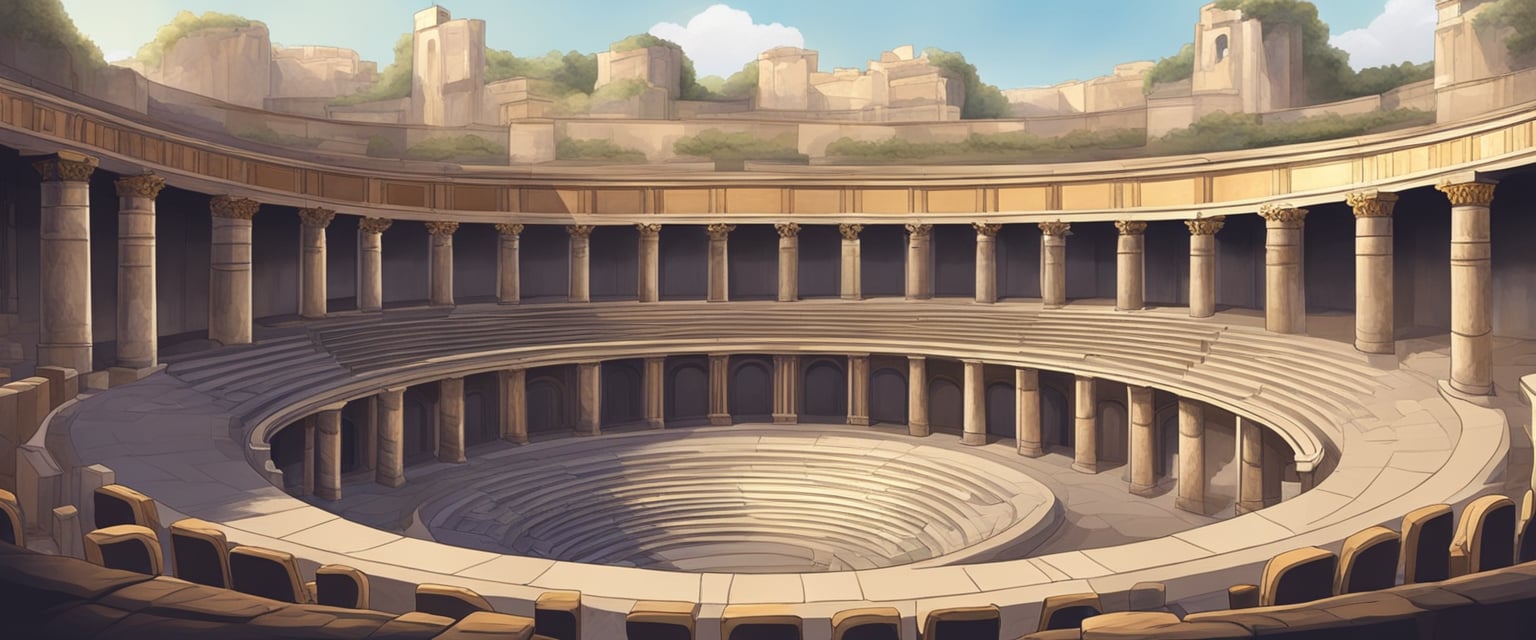
The architecture and design of Roman theaters were heavily influenced by Greek theater, but they also incorporated unique features that catered to the Roman taste and urban landscapes.
As these performances were an integral part of Roman culture, the theaters were built in a manner that allowed for a wide variety of shows, ranging from plays to gladiatorial contests.
The structural designs—including the scaenae frons, the orchestra, and the auditorium—optimized the spectator’s experience of the performance.
Acoustic Innovations
Roman architects were pioneers in the field of acoustics, implementing designs that enhanced the audience’s auditory experience.
The layout of the cavea and the materials used in construction worked in unison to channel sound effectively from the stage to the furthest seats.
Innovations such as the amphitheater took these principles further, encapsulating the crowd within a fully enclosed oval form that amplified the spectacle’s sights and sounds.
Cultural and Social Aspects
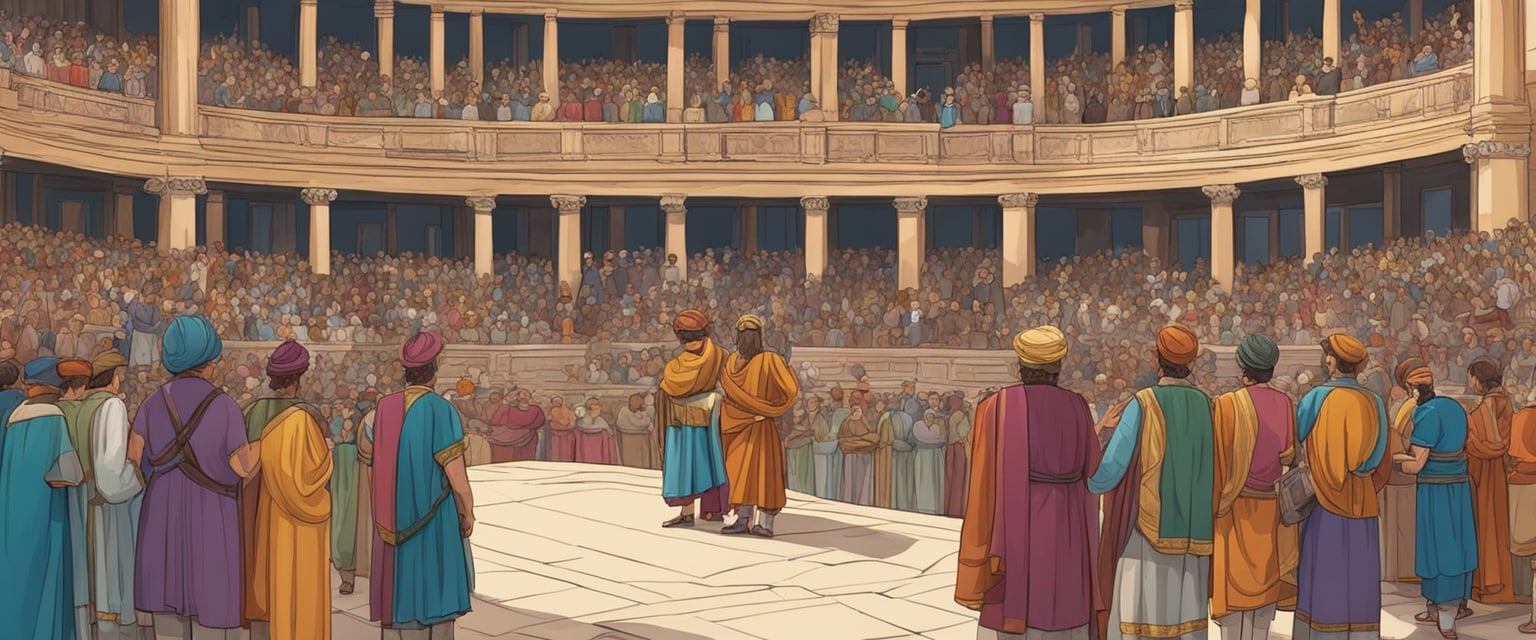
In the Roman Empire, theaters were more than just venues for entertainment; they were integral to the cultural and social framework, reflecting and reinforcing the societal norms and hierarchies of the time.
Role of Theater in Roman Society
Theaters in ancient Rome were significant spaces for social interaction and cultural exchange.
They served as important venues for a variety of performances, such as plays, orations, and musical events, which were aesthetically pleasing and also a means of imparting Roman values and ideologies.
For citizens, attending the theater was a common practice and an essential aspect of public life.
Social Stratification and Seating Arrangements
Seating arrangements in Roman theaters mirrored the social class structure.
Magistrates and elite members of society occupied the prominent lower seats, known as the ima cavea. Ordinary citizens had seats further back, while women and the lower classes were relegated to the upper tiers or summa cavea.
This spatial organization visibly showcased the social hierarchy and reinforced the divisions within the society.
Theater as a Means of Control
Roman authorities often used theater as a tool for maintaining social control and political stability.
By offering free admission to theater spectacles, magistrates could appease and entertain the populace, distracting them from political issues.
Spectacles in the theater provided a platform for emperors and politicians to demonstrate power and propagate state-approved messages, thus using entertainment to subtly exert influence over spectators.
Literary and Artistic Contributions
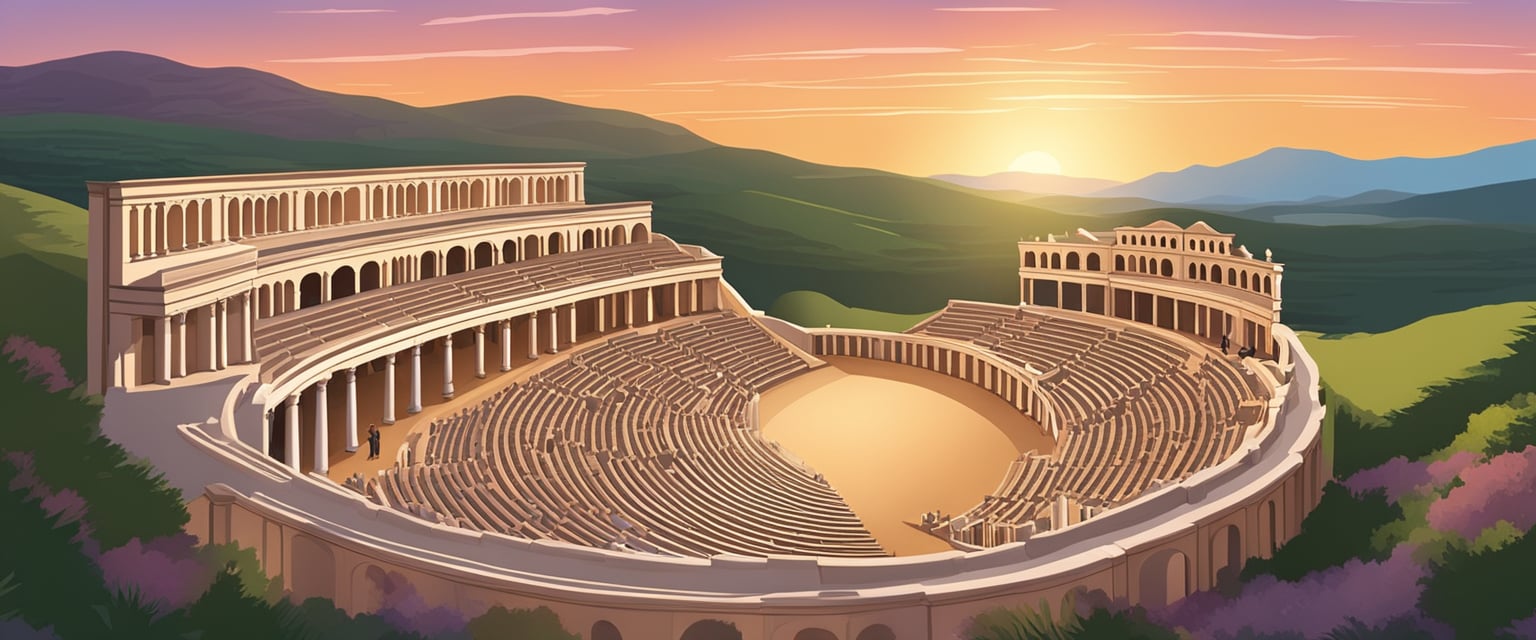
The literary and artistic fabric of Roman theater was rich and multifaceted, with contributions spanning from inventive playwrights and their compelling works to the evolution of distinctive theatrical genres that resonated with Roman societal values and tastes.
Conclusion
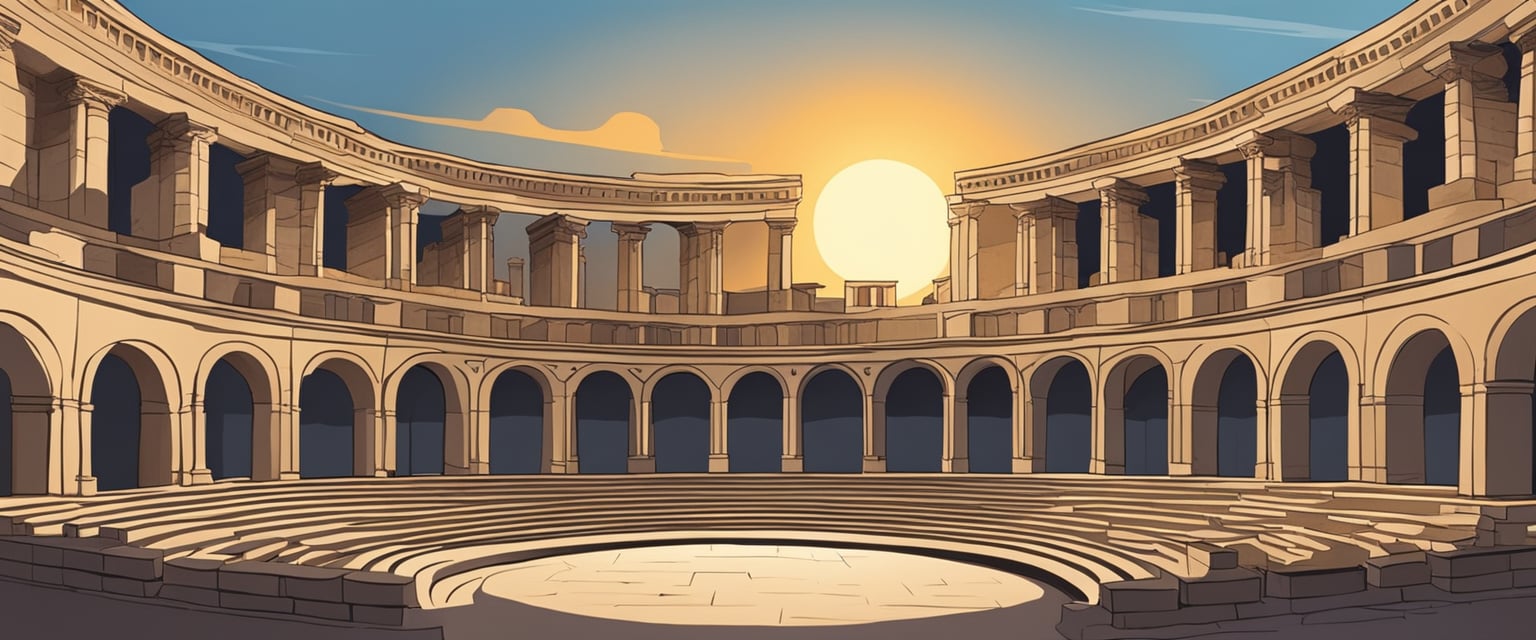
Roman theaters were an integral part of social and cultural life in ancient Rome. They served not only as venues for entertainment but also as spaces for community gathering and the expression of Roman societal values.
The remains of these structures offer insights into the architectural expertise of Roman builders and their understanding of acoustics and audience engagement.
Theaters typically featured a semi-circular design, indicating an emphasis on visibility and acoustics, allowing spectators to enjoy performances without the aid of modern technology.
In the archaeological study of Roman theaters, research suggests that state-sponsored ludi scaenici were significant cultural events. These insights are drawn from combining social practices with the material record.
The construction and design of Roman theaters evolved over time, with influences and improvements made by various emperors.
The intricate scaenaefrons (stage front) is a testament to the artistic grandiosity of the period, with some attributing developments in design to the Hadrianic or early Antonine period.
Scholars continue to analyze historical texts and excavations to further understand the existence and development of theaters in the post-Roman world.
For instance, the Description of a show provides evidence of theatrical activities during the twelfth and thirteenth centuries, signifying the lasting impact of Roman theater.
The work of Vitruvius and his writings on theater design also remain a crucial point of study.
This provides a critical link to comprehending how Roman architects may have laid out their theaters, showcasing a blend of practicality and aesthetic sensibility.
Ultimately, Roman theaters reflected the empire’s grandeur and its enduring influence on subsequent generations, not just in architecture, but in societal norms and cultural practices.
Frequently Asked Questions
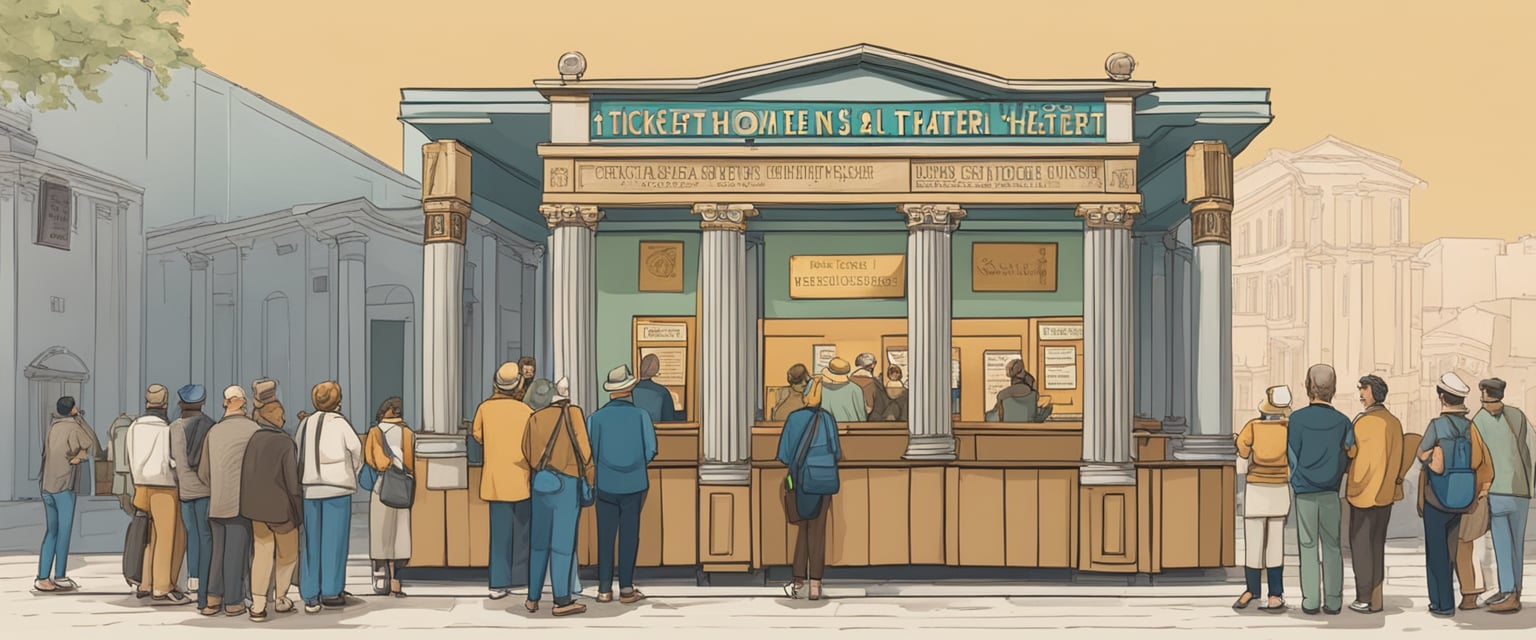
Related Post
A shocking documentary proves that mermaids do exist
SHOCKING Revelation: Thuya, Mother of Queen Tiye, Was the Grandmother of Akhenaten and Tutankhamun—What Ancient Egyptian Secrets Did She Leave Behind?
Breaking News: Astonishing Discoveries at Karahan Tepe Confirm an Extraterrestrial Civilization is Hiding on Earth, and NO ONE Knows!
Breaking News: Researchers FINALLY Discover U.S. Navy Flight 19 After 75 Years Lost in the Bermuda Triangle!
NASA’s Secret Investigation: Uncovering the Astonishing Mystery of the UFO Crash on the Mountain!
Explosive UFO Docs LEAKED: Startling Proof That Aliens Ruled Ancient Egypt!